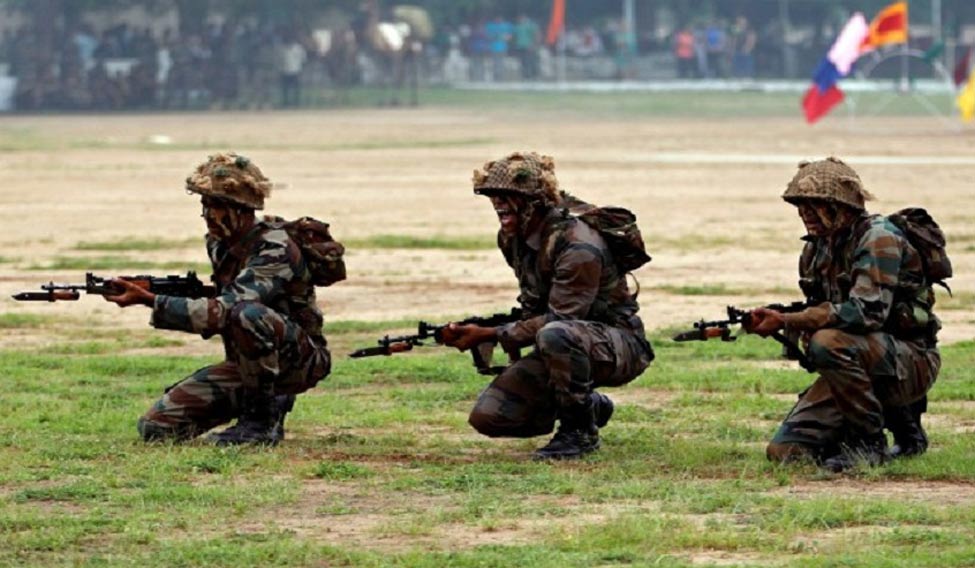Finally the ghost of Lord Ismay is being exorcised. The Indian army is finally getting a little lean and mean. Its teeth should get sharper, and its tail should get shorter.
The Narendra Modi cabinet on Wednesday approved 65 of the 99 recommendations of the Shekatkar committee for reforming the army. This could lead to a small manpower cut, but more of 'redeployment' of about 57,000 men.
India has the third largest army in the world, but the size was not something to be proud of. Chief after chief, and committee after committee, had pointed out that quite a few of these men were doing purely non-military work—like rearing cattle, milking them, or delivering postal mail.
The army had set up these establishments over more than a century ago when milk was not available in remote stations and there were no refrigerated vans. Today when India is overflowing with milk (India is the world's largest milk producer), and when posted letters are following the telegram to oblivion, it would look Tughlaqian for the army to run farms, and deploy uniformed soldiers to rear cattle and deliver letters.
All the same, the army was holding on them, either citing hoary traditions, sheer lethargy, or lack of administrative will that prevented reform. Once in the late 1990s, Gen. V.P. Malik had almost got a troop cut of 50,000 approved when the Kargil war broke out and none could even talk of a manpower cut.
Finally the Lt Gen. D.B. Shekatkar committee submitted a report in last December to then Defence Minister Manohar Parrikar identifying 99 areas of reform, most of them cuts, rejigs and readjustments that could help the army cut the flab. Today the Narendra Modi cabinet approved 65 among them to be implemented over the next few months and to be completed by 2019.
Defence Minister Arun Jaitley hails the exercise as the first serious reform attempt after Independence, which would mean he would be dismantling or rejigging a structure left behind by Lord Ismay, who presided over the division of the military during partition, and legated today's structure to the Indian army.
Though the farms and postal service are often cited as anachronisms, the real cut or reform will be in the corps of signals, the corps of engineers and the ordnance corps. Several engineering units and signal units whose work and technologies are currently overlapping will be merged. All the 39 military farms will be shut down, the cattle sold off, and the vast farm lands will be used for building military infrastructure. Some have already been closed. Postal cells in peace stations will also be shut.
 [File] The Indian Army would have to remain human-intensive because of the nature of tasks they have to perform | Reuters
[File] The Indian Army would have to remain human-intensive because of the nature of tasks they have to perform | Reuters
The army had always been worried about its revenue (running) expenses shooting up, leaving less and less (now only 20 per cent of the army budget) for buying capital equipment. This has been affecting modernisation, and the finance ministry had been asking the army to cut the revenue expenses.
The government expects a saving of Rs 25,000 crore over the next five years from the slimming and trimming, which could be used for substantial modernisation efforts.
One of the major recommendations that has been accepted is to transfer the running of the National Cadet Corps from the defence ministry to the human resources development ministry. This would lead to more civilians coming to do the clerical work in the NCC offices and the uniformed officers getting to focus on training.
One of the recommendations of the committee is that the defence services should be given 2.5 to 3 per cent of the GDP (at present they get less than 2 per cent), but it is not clear whether this is among the recommendations that have been accepted by the cabinet. Such a financial commitment would need deeper examination of the budgetary system.
Interestingly, China, which is modernising its forces faster, is cutting its military manpower by about 200,000, but India is not going for any such drastic troop cut. The Indian Army would have to remain human-intensive because of the nature of tasks they have to perform. Internal security duties still remain human-centric rather than technology-driven, and the Indian Army has a plethora of such duties to perform ranging from quelling riots in Kashmir to providing disaster relief.
Rather than troop cut, the Indian military reform is aimed at extracting better performance from the existing infrastructure. Thus several of the non-combat organisations such as the defence estates, defence accounts, defence quality assurance, ordnance factory board will be subjected to performance audit.






